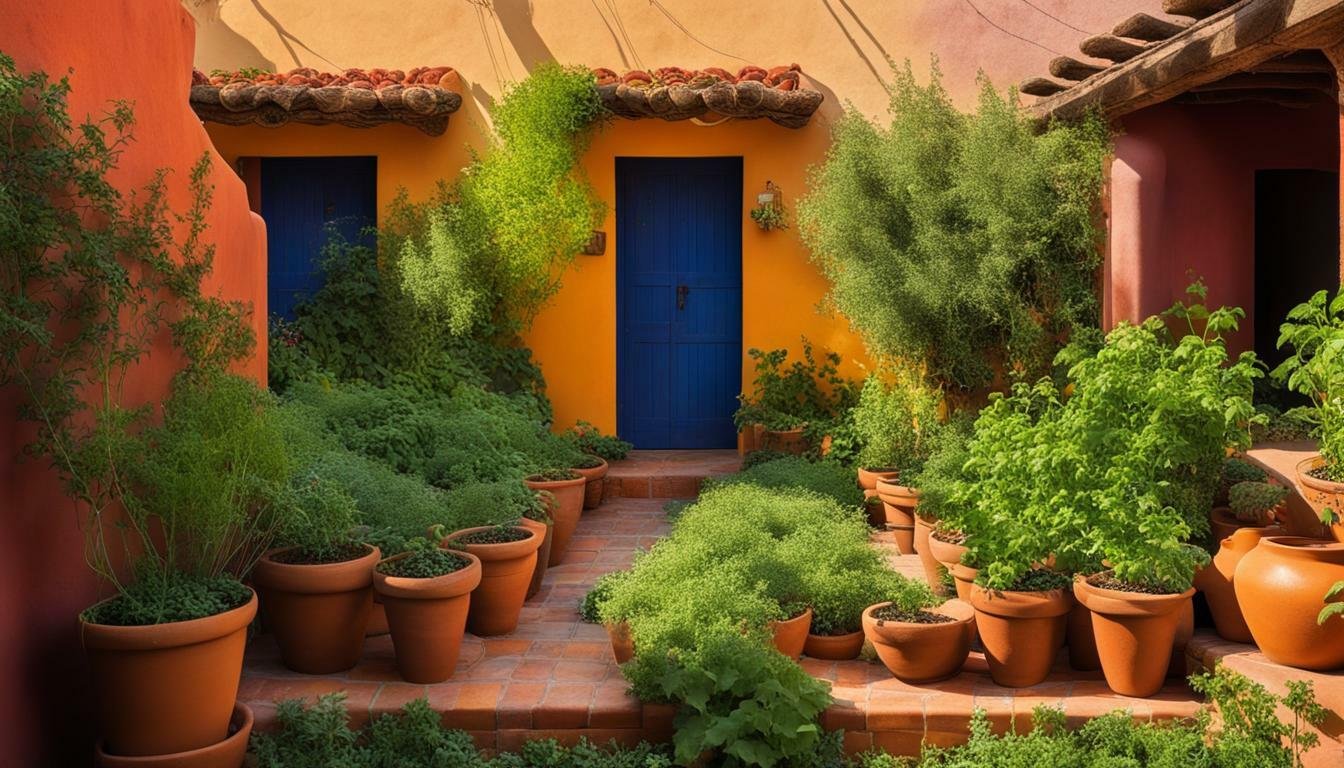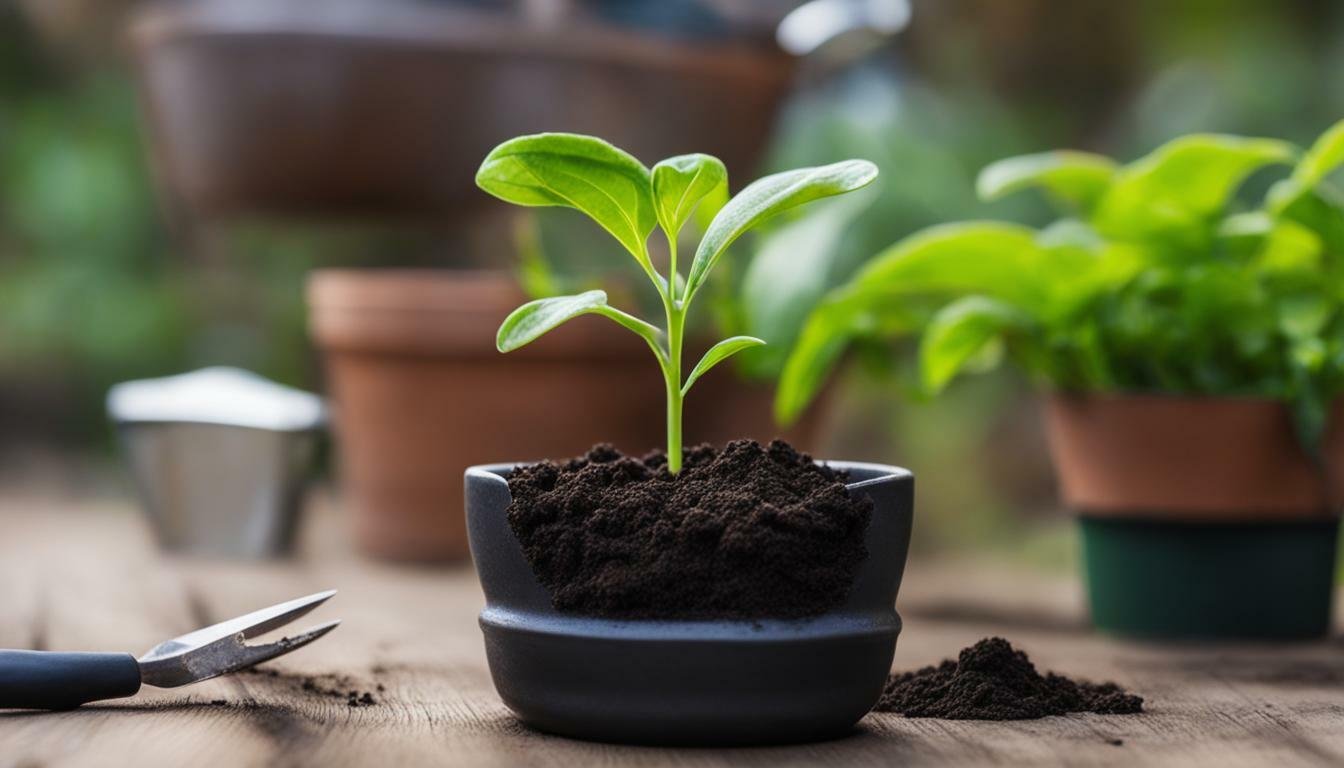Grow Herbs for Mexican Cuisine
Mexican cuisine has gained immense popularity in the United States, and one of the keys to authentic Mexican flavor lies in growing your own herbs. Whether you’re a seasoned cook or a beginner in the kitchen, having a vibrant herb garden dedicated to Mexican herbs can elevate your dishes to a whole new level.
- Growing your own herbs is crucial for capturing the authentic flavors of Mexican cuisine.
- A well-maintained herb garden can provide you with a constant supply of fresh herbs for Mexican recipes.
- Understanding the specific growing conditions and sunlight requirements for each herb is essential for successful cultivation.
- Experimenting with different herbs, spices, and peppers can add complexity and depth to your Mexican dishes.
- Grinding your own spices allows you to have a fresh and aromatic blend tailored to your taste.
The Importance of Herbs, Spices, and Peppers in Mexican Cuisine
Herbs, spices, and peppers are the essence of Mexican cuisine, providing distinct flavors and aromas that make every dish a culinary delight. Whether you’re preparing salsa, enchiladas, or guacamole, the right combination of herbs and spices can take your Mexican cooking to the next level.
One of the best herbs for Mexican cooking is cilantro. Its fresh and citrusy flavor is a staple in many Mexican dishes, adding a vibrant touch to salsas, soups, and tacos. Other herbs commonly used in Mexican cuisine include epazote, Mexican oregano, and Mexican mint marigold, each bringing its own unique taste and fragrance to different recipes.
To cultivate herbs for Mexican dishes, it’s important to create the right growing conditions. Most Mexican herbs thrive in well-drained soil with full sun exposure. You can start by planting the herbs in containers or directly in your garden, making sure to provide them with enough space to grow. Regular watering and occasional fertilizing will keep your herbs healthy and flavorful.
For the best flavor, it’s recommended to grind your own spices. Whole spices retain their freshness and aroma longer, and grinding them just before using releases their essential oils, enhancing the taste of your dishes. Investing in a good spice grinder or mortar and pestle can make a significant difference in your Mexican cooking.
By mastering the art of growing herbs, spices, and peppers for Mexican cuisine, you can bring the authentic flavors of Mexico to your own kitchen. Experiment with different combinations, and let your taste buds guide you on a culinary journey through the vibrant and diverse world of Mexican cooking.
Growing Herbs for Mexican Cuisine – Tips and Techniques
Growing herbs for Mexican cuisine requires a bit of knowledge and care, but with the right techniques, you can enjoy a bountiful herb garden in your own backyard. Whether you have a spacious garden or just a small balcony, you can successfully grow herbs that will enhance the flavors of your favorite Mexican dishes. Here are some tips and techniques to help you get started:
- Choose the right herbs: Start by selecting the herbs commonly used in Mexican cooking, such as cilantro, oregano, and parsley. These herbs thrive in warm weather and can withstand the heat of summer. You can also experiment with other herbs like epazote, hoja santa, and Mexican tarragon to add unique flavors to your dishes.
- Provide the ideal growing conditions: Most Mexican herbs prefer full sun, so choose a sunny spot for your herb garden. Ensure that the soil is well-draining and rich in organic matter. Consider using raised beds or containers if you have limited space or poor soil quality.
- Water appropriately: Mexican herbs generally prefer moderate watering. Water the plants deeply when the top inch of soil feels dry, and avoid overwatering, as it can lead to root rot. Mulching around the herbs can help retain moisture and suppress weed growth.
- Harvest and prune regularly: To encourage healthy growth and prolong the harvest season, regularly trim your herbs by removing the top 1/3 of the plant. This will prevent them from flowering and going to seed too quickly. Harvest your herbs in the morning when the essential oils are at their peak.
By following these tips and techniques, you can cultivate a thriving herb garden that will provide you with a constant supply of fresh and flavorful ingredients for your Mexican recipes. Growing your own herbs not only enhances the taste of your dishes but also adds a sense of fulfillment and satisfaction to your culinary journey. So, roll up your sleeves, get your hands dirty, and embark on the exciting adventure of growing herbs for Mexican cuisine!
Remember, growing herbs for Mexican cuisine is not only a practical endeavor but also an enjoyable and rewarding one. So, start planting, nurturing, and savoring the flavors of Mexico right in your own backyard!
Mexican cuisine is known for its vibrant and diverse flavors, and understanding the specific herbs and spices used in traditional Mexican cooking is essential for creating authentic dishes. From the earthy heat of ancho chili powder to the bright freshness of cilantro, these ingredients play a crucial role in bringing out the unique taste of Mexican dishes. Let’s explore some of the key herbs and spices that make Mexican cuisine so special.
Achiote Paste: Achiote paste is a vibrant, red seasoning made from annatto seeds, garlic, and various spices. It adds a rich and slightly sweet flavor to dishes such as cochinita pibil and tamales. Achiote paste is commonly used in traditional Mexican cooking and adds a beautiful color to the dishes it flavors.
Adobo Sauce: Adobo sauce is a tangy and spicy sauce made from chili peppers, vinegar, and spices. It is often used as a marinade for meats, giving them a deliciously smoky and spicy flavor. Adobo sauce can be used in a variety of Mexican dishes, including tacos, enchiladas, and grilled meats.
Ancho Chili Powder: Ancho chili powder is made from dried poblano peppers and has a deep, rich flavor with a mild heat. It adds a smoky and slightly sweet taste to Mexican dishes like mole, chili con carne, and salsas. Ancho chili powder is a versatile spice that can elevate the flavor of many dishes.
| Herb/Spice | Flavor Profile | Culinary Uses |
|---|---|---|
| Chipotle | Smoky, spicy | Used in salsas, marinades, and adobo sauces |
| Cilantro | Refreshing, citrusy | Adds freshness to salsas, guacamole, and tacos |
| Clove | Warm, aromatic | Used in mole sauces, hot chocolate, and desserts |
| Coriander | Citrusy, slightly sweet | Commonly used in salsas, marinades, and spice blends |
| Cumin | Earthy, smoky | Used in chili powder, salsas, and meat rubs |
| Hoja Santa | Herbal, anise-like | Used in tamales, sauces, and stews |
| Mexican Cinnamon | Sweet, warm | Used in desserts, hot drinks, and savory dishes |
| Mexican Oregano | Pungent, citrusy | Used in salsas, marinades, and bean dishes |
| Papalo | Herbaceous, slightly bitter | Used in salsas, guacamole, and as a garnish |
| Romerito | Vegetal, earthy | Used in mole, tamales, and sauces |
As you explore the world of Mexican cuisine, don’t be afraid to experiment with different herbs and spices. These ingredients are the heart and soul of traditional Mexican cooking and can take your dishes to new culinary heights. So grab your mortar and pestle, start growing your own herbs, and get ready to create delicious and authentic Mexican meals that will transport you to the vibrant streets of Mexico.
Conclusion
Growing herbs for Mexican cuisine not only allows for a steady supply of fresh ingredients but also adds an extra layer of authenticity and flavor to your Mexican recipes. With the increasing popularity of Mexican cuisine in the United States, having your own Mexican herb garden can elevate your dishes to new heights.
By providing the right growing conditions and sunlight for your herbs, you can ensure that they thrive and produce flavors that are true to their Mexican roots. Whether it’s cilantro, oregano, or ancho chili peppers, cultivating your own herbs and spices allows you to have a direct impact on the quality and taste of your meals.
One tip for enhancing the flavor of your Mexican dishes is to grind your own spices. This ensures that you have the freshest and most aromatic flavors in your cooking. Additionally, knowing how to harvest and preserve your herbs properly will guarantee that you always have a plentiful supply of these essential ingredients on hand.
Experimenting with specific herbs and spices commonly used in Mexican cooking, such as achiote paste, adobo sauce, or chipotle, can take your recipes to the next level. Incorporating these flavors into your dishes allows you to create truly authentic Mexican flavors in the comfort of your own kitchen.
FAQ
Q: What are the best herbs for Mexican cooking?
A: Some of the best herbs for Mexican cooking include anise, coriander, bay, oregano, and sage.
Q: How do I grow herbs for Mexican cuisine at home?
A: To grow herbs for Mexican cuisine at home, you need to provide the right growing conditions and sunlight for the herbs. Plant them in well-draining soil, water them regularly, and ensure they receive at least six hours of sunlight per day. Harvest the herbs when they are mature and use them fresh or dry them for later use.
Q: What are some specific herbs and spices commonly used in Mexican cooking?
A: Some specific herbs and spices commonly used in Mexican cooking include achiote paste, adobo sauce, ancho chili powder, chipotle, cilantro, clove, coriander, cumin, hoja santa, Mexican cinnamon, Mexican oregano, papalo, and romerito.
Q: Can I grind my own spices for Mexican cuisine?
A: Yes, grinding your own spices can enhance the flavor of your Mexican dishes. By grinding your own spices, you can ensure freshness and better control over the intensity of flavors in your recipes.
Q: What are the benefits of growing peppers at home?
A: Growing peppers at home allows you to have a steady supply of fresh and flavorful peppers for your Mexican and Tex-Mex dishes. You can choose from a variety of peppers with different heat levels and nutrients to suit your culinary preferences.






